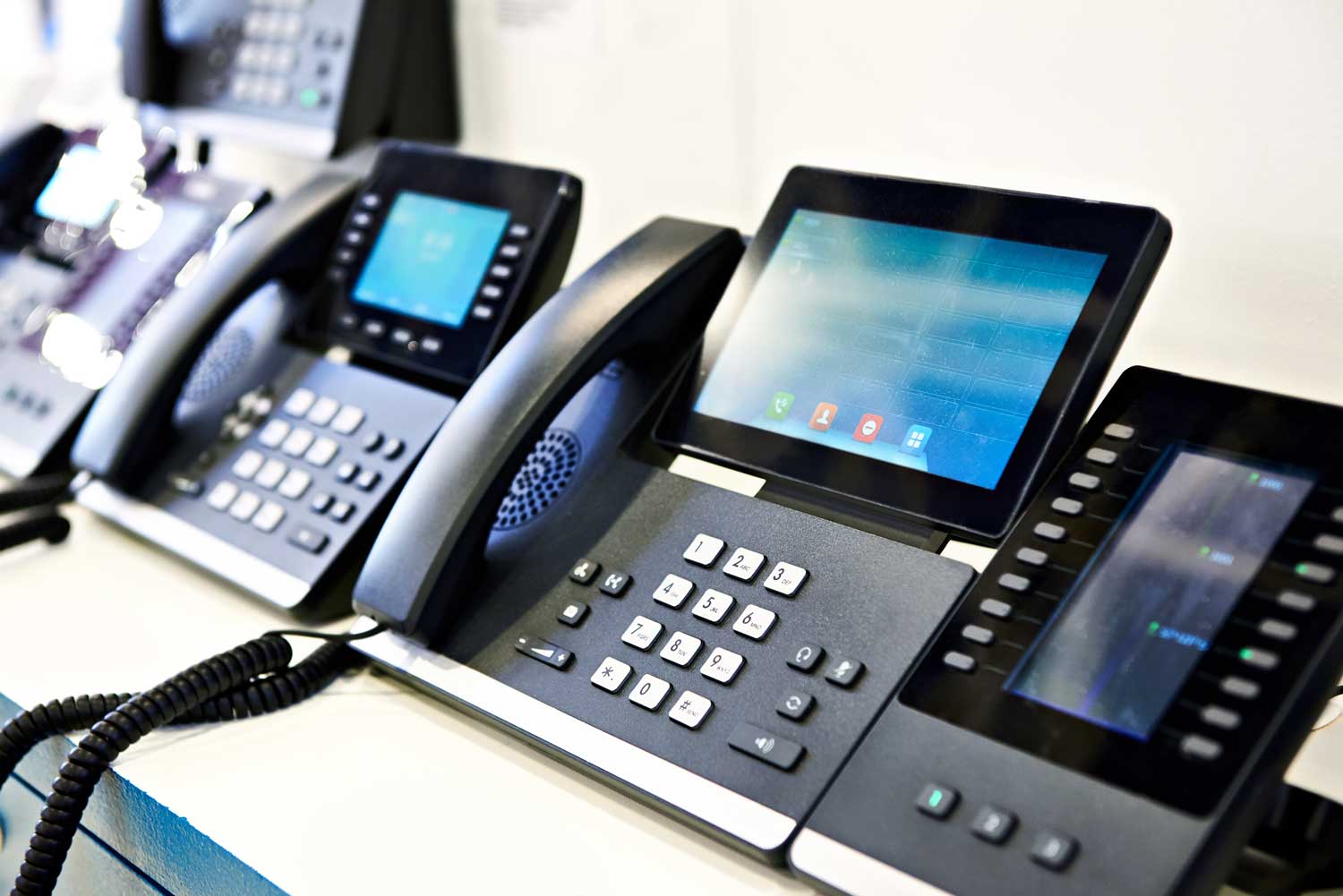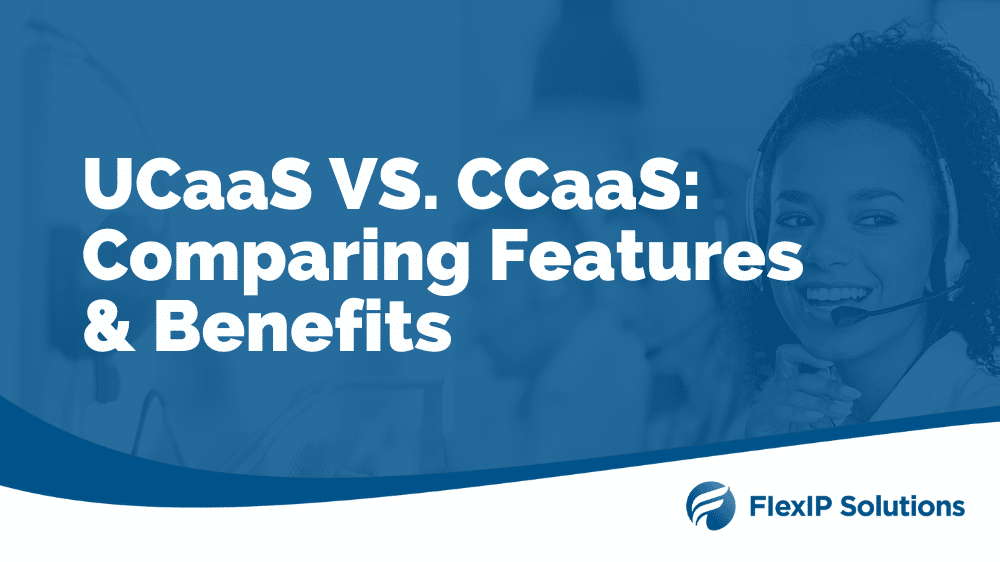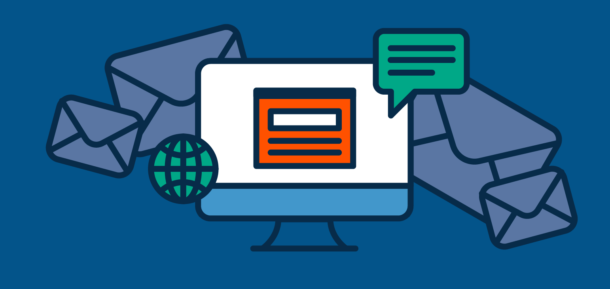In 2023, caught in the wake of accelerated digital transformation over the past three years, companies of all sizes understand their need for cloud-based phone systems and UCaaS to keep business operations going in the event of a disaster.
However, enterprises and midsize businesses eventually grow to a size where their customer service communications needs require them to invest in CCaaS services. Companies new to cloud communications may wonder what the differences are between UCaaS and CCaaS. To answer that question, let’s define their distinct features and benefits.
What is UCaaS and How Does it Work?
So, just what is UCaaS? UCaaS is an abbreviation for Unified Communications as a Service, which integrates communications capabilities into a single cloud-based platform, such as:
- Outbound and inbound calling
- Call routing
- Chat and messaging functions
- Online meetings
- Video and audio conferencing
- Team collaboration
- Virtual receptionist
- Voice-to-text conversion
Unified communications services work through three primary components:
- Application servers run by UCaaS providers in their own data centers, hosted in third-party data centers or hosted on public cloud platforms
- Software client applications that are downloaded onto user devices or accessed through web browsers
- Endpoints such as phones, video and audio conferencing and whiteboards that customers access their UCaaS provider from through either the public Internet or private network connections
What are the Benefits of UCaaS?
Companies use UCaaS for these key reasons:
- Right-sized Pricing – Organizations pay monthly subscription rates for the size of their business today with the flexibility to grow and no CapEx upfront.
- Increase Productivity – According to a 2021 report from Productiv, the average enterprise uses 200 different applications across all departments. A report by 451 Alliance on 2020 workforce productivity trends said that only a third of business employees are very satisfied with the mix of tools they currently use to get their work done. App fatigue is at the heart of this dissatisfaction, with respondents citing too many apps as their most significant overall work pain points. UCaaS helps to alleviate these productivity issues by consolidating different communications apps into one comprehensive platform.
- Mobilize Workforce – Company employees can now communicate from anywhere at any time using an Internet-enabled device, including a smartphone, laptop, tablet or computer.
- Frees Up IT – One of the critical parts of UCaaS is the “aaS” (as a service) component of the solution. Since a technically-proficient cloud communications provider manages it, an organization’s IT team no longer has to worry about managing its communications and collaboration platform and can focus on revenue-producing activities.
What is CCaaS and How Does it Work?
CCaaS is a SaaS-based application or platform that enables customer service organizations to manage multichannel customer interactions to deliver a better customer experience (CX).
CCaaS is a cloud-based contact center offering. Other types of contact centers include:
- Hardware, which is set up, hosted and maintained on-premises at a physical contact center or office location
- Hosted, where the organization outsources infrastructure management to an external provider
- Virtual, which enables contact center agents to work remotely from home
Much like hosted and virtual contact centers, a CCaaS solution can be outsourced to an IT or managed services provider, enabling remote work for agents.
Standard features of a CCaaS platform include:
- Call routing
- Interactive voice response (IVR) systems
- Automated call distributors (ACD)
- Computer telephony integration (CTI)
- Customer authentication
- Call whispering
- Skill-based routing
- Call queuing
- Call center analytics
- Customer survey tools
What are the Benefits of CCaaS?
Companies use CCaaS for these key reasons:
- Create a Better Customer Experience – A quality CCaaS solution comes with omnichannel routing capabilities so customers can reach and engage your business however they want, including:
- Social media
- SMS texting
- Live real-time web chat
- Voice calls
- IVR for self-service
CCaaS solutions integrate all these channels into a single platform that tracks and analyzes all customer data, including customer wait times and high call-volume periods, to help your business schedule staff and optimize resource allocation.
When needed, live monitoring, whisper and barge-in functionality make it possible for managers to help resolve customer issues and trouble tickets quickly and efficiently.
CCaaS reporting and analytics tools enable enterprises to:
-
- Track the number of abandoned calls
- Record and review calls to identify gaps in training and areas of improvement
- Receive alerts whenever agents or customers use questionable words or phrases
- Obtain context-sensitive call scripts
- Monitor and automatically adjust caller queues and voice response menus
- Create a Better Agent Experience – CCaaS has all relevant customer and product information integrated into the system, so it presents all service hub and CRM information to an agent – making them completely informed on a customer’s service history and enabling them to best address the current issue at hand. Screen pops can provide reps with key details about purchases and billing history that can help them upsell, cross-sell or discount services as appropriate.
- Reduce Overhead – Cloud-based, omnichannel CCaaS solutions provide significant cost savings, including:
- No upfront capital investments
- Low power costs
- Maximum hardware use
- Reduction in IT staffing
- Streamlined billing
- Reduced downtime

A Comparison of UCaaS and CCaaS
Below is a table comparing key factors between UCaaS and CCaaS:
| Factor | UCaaS | CCaaS |
| Primary Purpose | Connects an organization’s employees and optimizes internal collaboration | Connects sales and service representatives to customers and optimizes customer service and sales performance |
| Use Settings | Office buildings, home and remote workspaces and everywhere else employees interact digitally | Customer contact centers, sales divisions and wherever inbound and outbound customer contact is a key part of a given role |
| Integrations | Calendar and productivity applications, CRMs | CRMs, help desk software, UCaaS |
What are the Primary Differences Between UCaaS and CCaaS?
UCaaS differentiators from CCaaS:
- UCaas is related to internal communications
- UCaas is focused on team collaboration
- UCaaS provides a multichannel platform that unifies all communication channels in one interface
CCaaS differentiators from UCaaS:
- CCaaS is related to external communication
- CCaaS is customer service focused
- CCaaS provides omnichannel communication
What are the Primary Similarities Between UCaaS and CCaaS?
UCaaS and CCaaS, despite filling different purposes, have quite a bit in common, including:
- Both are cloud-based communication platforms
- Cloud-based payment models
- Streamlined communications
- Easy installation and maintenance with no upfront costs
- Remote-friendly with access to any employee anywhere from any Internet-enabled device
- Simplified user interface (UI) designed to embed various tools into a single software interface
- Call routing, which can integrate into CRMs and other applications
- Easy integration with other applications
- Quick scalability of up or down service packages as needed to match needs
- Both require training, especially for users accustomed to legacy and on-premises UCaaS and CCaaS platforms
- Potential incompatibility with aging on-premises software
UCaaS + CCaaS Integrate with Other Systems
UCaaS and CCaaS platforms are designed to integrate into an organization’s existing technology stack.
- UCaaS software is commonly integrated with productivity and scheduling apps for different departments to improve workflows.
- CCaaS platforms are typically integrated tightly with customer relationship management (CRM) platforms to track customer interactions, though modern-day UCaaS solutions will also integrate with CRMs.
- UCaaS and CCaaS platforms can also integrate directly with each other, which helps agents contact managers or senior experts within their organization to help resolve a customer problem.

Can Your Business Bundle UCaaS and CCaaS?
Yes, your company can use UCaaS and CCaaS solutions inside the same IT and network environment from the same IT and managed services provider.
What are the Benefits of Bundling UCaaS and CCaaS for your Business?
The benefits of bundling UCaaS and CCaaS from the same provider include the following:
- Internal Collaboration – Contact centers may be required to collaborate directly with internal departments, such as when outbound sales callers pass along warm leads to inside sales. More self-operating contact centers will still need to reach the internal organization for unique customer support issues or teetering sales calls.
- Better CRM Integration – As we’ve covered, UCaaS and CCaaS platforms are designed to integrate with CRM applications to enable features like click-to-dial and automatic call logging. With both platforms prompting CRM updates, your organization’s CRM stays updated, and teams across the organization can collaborate on a specific customer’s needs.
- One Source for Support – Using the same CCaaS and UCaaS provides your organization with one contact point for any support or service optimization needs.
- One Bill to Pay – Plus, when using the same provider, you’ll have to onboard and pay one less vendor and process one less invoice each month, saving your AP team time.
UCaaS vs. CCaaS Frequently Asked Questions (FAQs)
The communications solutions specialists at FlexIP Solutions have been solving communications challenges for organizations for years. In that time, we’ve encountered plenty of frequently asked questions (FAQs) about UCaaS and CCaaS.
What is the difference between UCaaS and CPaaS?
UCaaS is a ready-to-deploy cloud communications software with a suite of channels and tools already in place. Communications platform as a service (CPaaS) offers a platform of APIs and tools for proficient developers to build, customize and integrate communication capabilities into applications their organization already uses.
What is the difference between UCaaS and VoIP?
You can get a more in-depth answer to the question “what is hosted VoIP?” in our blog. VoIP hosted services are Internet-based telephony services managed by a service provider partner. The difference between UCaaS and VoIP is that VoIP offers businesses a single communications channel through voice calls, while UCaaS integrates multiple communications channels, including VoIP, into a single platform.
Does VoIP play a role in UCaaS and CCaaS?
Yes, VoIP from a business VoIP phone service is involved in both UCaaS and CCaaS because it enables real-time voice calling functionality inside both communications platforms.
Ready to unify your communications? Let’s talk. Call or text FlexIP Solutions at 833.779.7700.


